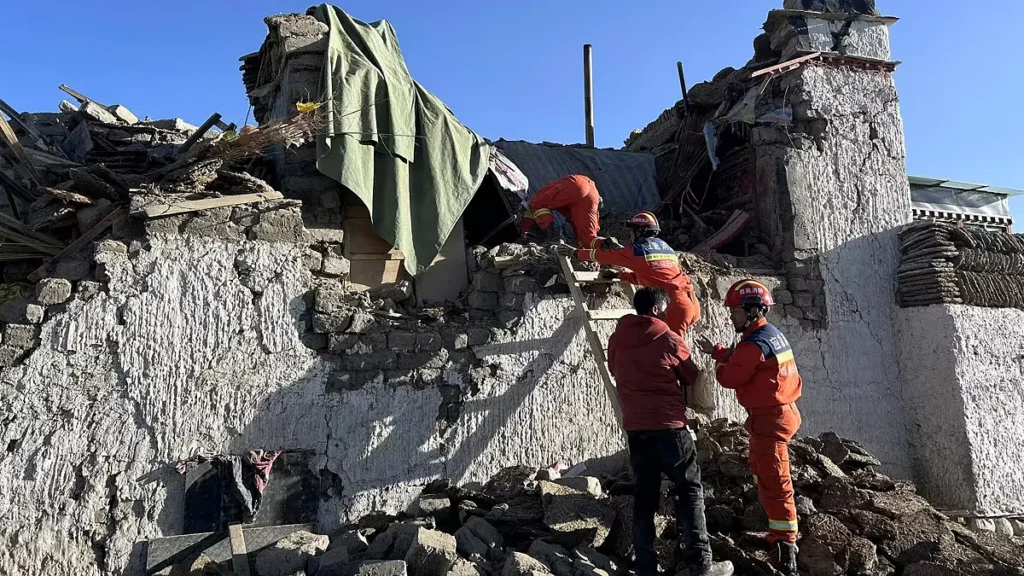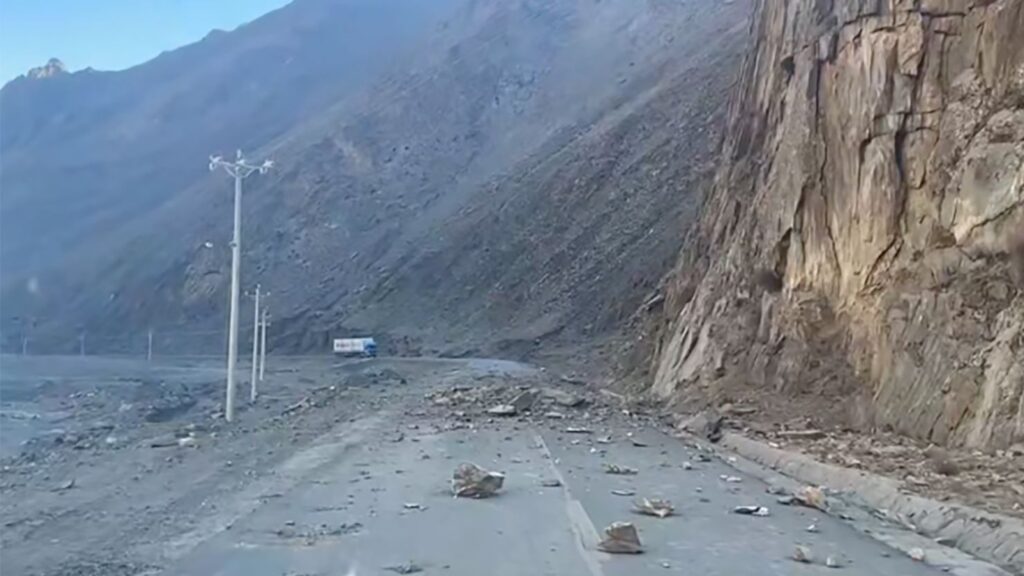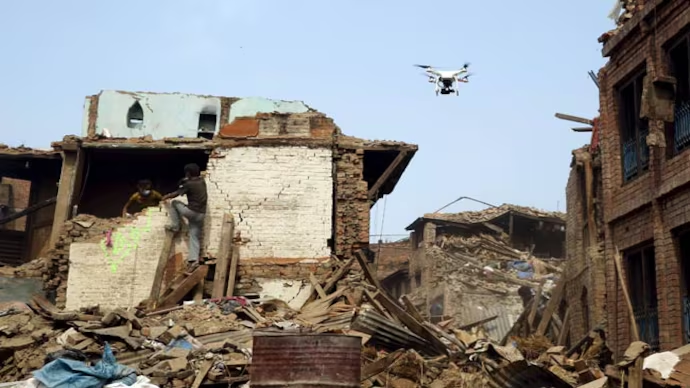Let’s discover the impact of the 2025 Tibet earthquake and learn how preparedness can save lives. Explore insights, rescue efforts, and lessons for future safety.
Table of Contents
On January 7, 2025, a devastating earthquake struck the Tibet Autonomous Region in China, leaving behind widespread destruction and a heavy toll on human life. This 6.8-magnitude earthquake, centered near Shigatse, a prominent city in Tibet, serves as a stark reminder of the region’s vulnerability to seismic activities. This article delves into the details of the event, its aftermath, and the steps needed to prepare for such natural disasters in the future.

A Catastrophic Event: What Happened?
The earthquake struck at approximately 9:05 a.m. local time, with its epicenter located about 12 miles southwest of Shigatse, a region already prone to seismic activity due to its tectonic makeup. According to the U.S. Geological Survey, the quake was registered as a magnitude 7.1 event, though Chinese authorities measured it slightly lower at 6.8. Tremors from the earthquake were felt as far away as Nepal and northern India, underscoring its intensity.
The immediate aftermath revealed a grim picture: at least 95 lives were lost, with over 100 people sustaining injuries. Tingri County, which lies closest to the epicenter, bore the brunt of the damage. Over 1,000 homes collapsed, leaving families displaced and vulnerable in freezing temperatures.
Why Is Tibet Prone to Earthquakes?
The Himalayas, including the Tibetan plateau, sit on the boundary of two major tectonic plates: the Indian Plate and the Eurasian Plate. The continuous collision and subduction of these plates make this region highly susceptible to earthquakes. Tibet’s high-altitude terrain amplifies the impact of such seismic activities, often leading to landslides, structural collapses, and logistical challenges in rescue operations.
Historical patterns show that this region has experienced numerous catastrophic earthquakes. For example:
- In 2008, the Sichuan earthquake resulted in nearly 90,000 fatalities.
- The 2025 Tibet earthquake is now considered among the most significant seismic events in recent history.

Immediate Impact: Lives, Homes, and Infrastructure
The 2025 Tibet earthquake caused severe damage to homes, businesses, and public infrastructure:
- Human Impact: The death toll of 95 is expected to rise as rescue operations continue. Over 100 people have been hospitalized for injuries, with many in critical condition.
- Infrastructure Damage: Roads, communication lines, and power grids were disrupted, isolating the affected areas and delaying aid.
- Cultural and Historical Sites: Shigatse, home to several ancient monasteries and religious sites, suffered damage to its cultural landmarks, raising concerns about the preservation of its heritage.
Residents reported chaotic scenes, with buildings shaking violently and debris raining down on the streets. Many were forced to spend the night outdoors in freezing conditions, fearing aftershocks.
Rescue and Relief Efforts: A Race Against Time
The Chinese government mobilized a swift response to the disaster. Over 1,500 firefighters, military personnel, and medical teams were dispatched to the region. Rescue workers are currently sifting through the rubble to locate survivors and provide immediate medical assistance.
President Xi Jinping issued a directive prioritizing the rescue of trapped individuals, care for the injured, and restoration of critical infrastructure. Emergency shelters have been set up to accommodate displaced families, offering food, water, and warmth in the harsh winter conditions.
However, challenges remain:
- Remote Terrain: The mountainous landscape and damaged roads have made it difficult for rescue teams to reach the hardest-hit areas.
- Harsh Weather: Freezing temperatures and strong winds are complicating relief efforts, putting survivors at risk of hypothermia.

The Global Ripple Effect
The earthquake’s impact wasn’t confined to Tibet. Neighboring countries like Nepal and India reported tremors, sparking concerns of potential aftershocks. In Kathmandu, residents evacuated buildings as a precautionary measure, while authorities in India monitored for structural damage in northern states.
The international community has expressed solidarity with China. Humanitarian organizations, including the Red Cross, are preparing to send aid, and neighboring governments have offered assistance in relief efforts.
Learning from the Past: Strengthening Earthquake Preparedness
The 2025 Tibet earthquake highlights the urgent need for better preparedness in earthquake-prone regions. Key lessons include:
Enforcing Building Codes
Buildings in high-risk areas should adhere to stringent seismic safety standards. Retrofitting older structures and constructing new ones with earthquake-resistant designs can save lives.Public Education
Teaching communities how to respond during an earthquake—such as “Drop, Cover, and Hold On”—can reduce panic and injuries.Improved Early Warning Systems
Advancements in technology allow for early detection of seismic activity, providing valuable seconds to evacuate and prepare.Emergency Drills
Regular drills in schools, workplaces, and communities can ensure people are familiar with evacuation routes and safety procedures.

Stories of Resilience: Humanity in the Face of Disaster
Amid the devastation, stories of courage and resilience have emerged. In one instance, a group of volunteers worked tirelessly through the night to rescue an elderly couple trapped under their collapsed home. Elsewhere, monks from a nearby monastery opened their doors to displaced families, offering food and shelter.
These acts of kindness underscore the human spirit’s ability to come together in times of crisis.
The Role of Technology in Disaster Management
Technology is playing a vital role in the ongoing rescue and relief efforts:
- Drones: Rescue teams are using drones equipped with thermal imaging to locate survivors under rubble.
- AI Analysis: Artificial intelligence is being utilized to predict aftershock patterns and identify high-risk zones.
- Mobile Apps: Apps designed for disaster response are helping coordinate efforts by tracking resource distribution and updating rescue workers in real time.

A Call to Action: Building a Safer Future
As we reflect on the tragedy of the 2025 Tibet earthquake, it’s clear that proactive measures are essential to minimize the impact of future disasters. Governments, NGOs, and communities must work together to implement the following:
- Long-Term Planning: Integrating disaster risk reduction into urban planning and development.
- Investment in Research: Studying the region’s seismic activity to better understand and mitigate risks.
- Strengthening Resilience: Empowering communities through education, resources, and support systems.
Frequently Asked Questions
What was the magnitude of the 2025 Tibet earthquake?
The earthquake was measured at 6.8 by Chinese authorities and 7.1 by the U.S. Geological Survey.
How many people were affected?
At least 95 people were killed, and over 100 were injured. Thousands were displaced as homes and infrastructure were destroyed.
Why is the Tibet region prone to earthquakes?
Tibet lies on the boundary of the Indian and Eurasian tectonic plates, which frequently collide, causing seismic activity.
What are the challenges in rescue operations?
The remote terrain, freezing temperatures, and damaged infrastructure have made it difficult for rescue teams to access affected areas.
How can we prepare for future earthquakes?
Enforcing building codes, improving early warning systems, conducting emergency drills, and educating the public are crucial steps.
If you found this article insightful, consider sharing it with your network to raise awareness about disaster preparedness and response. Together, we can build safer, more resilient communities.


